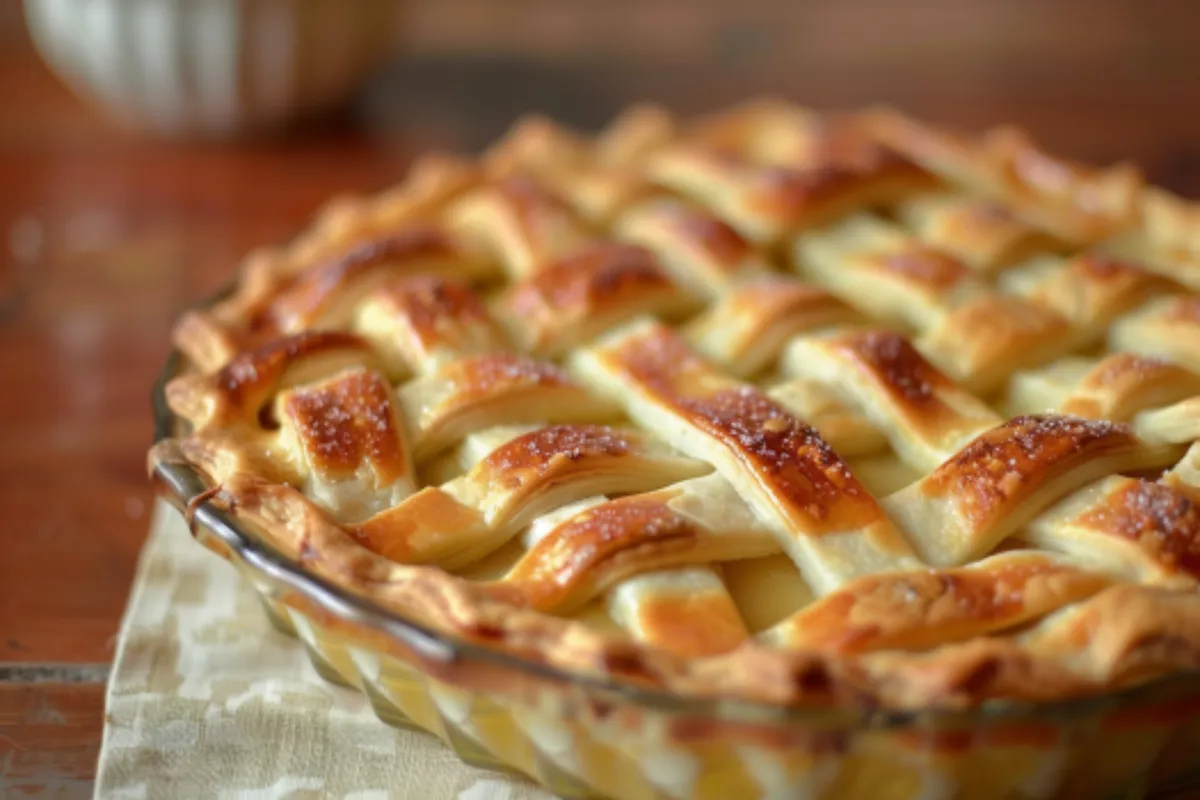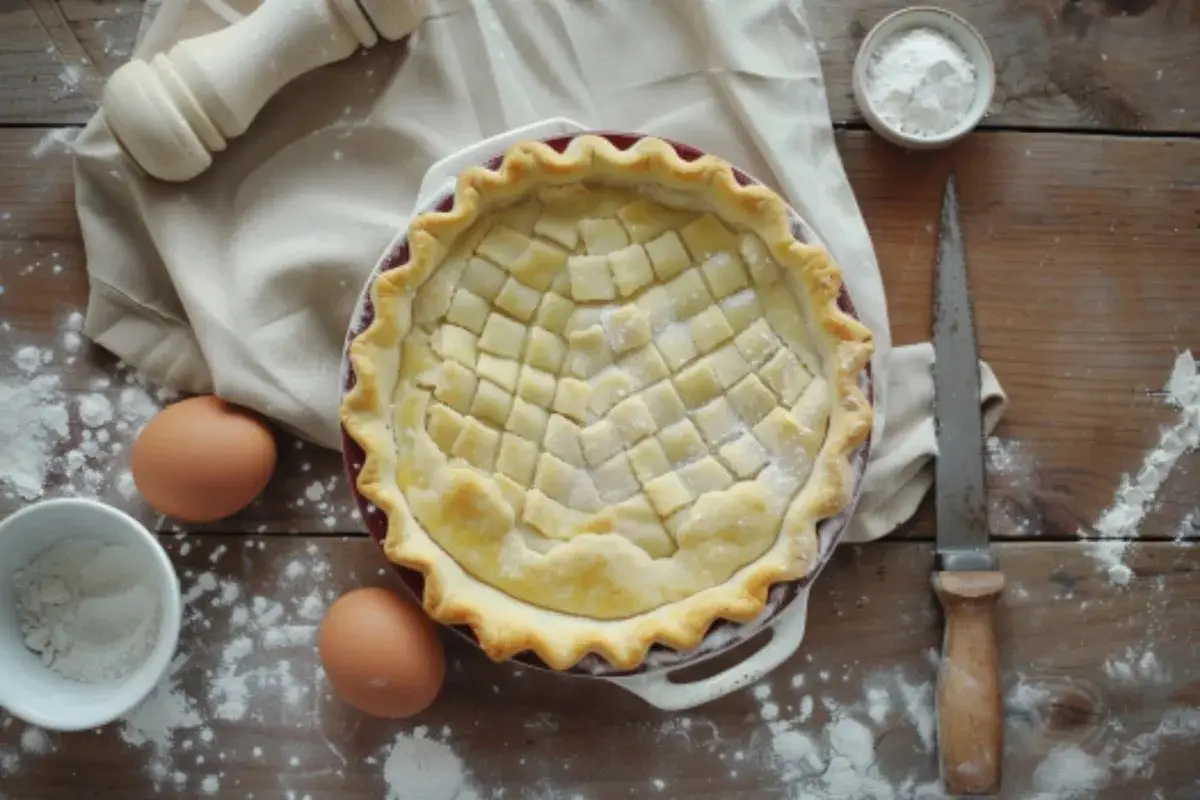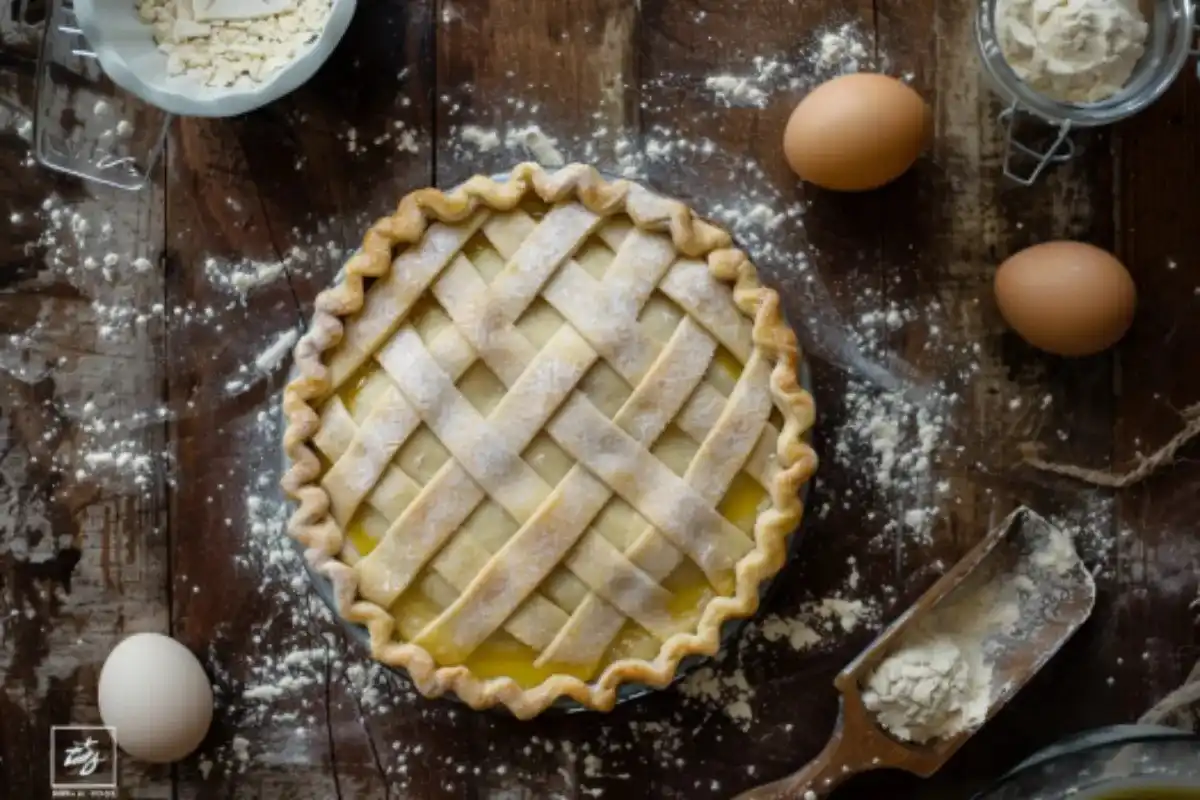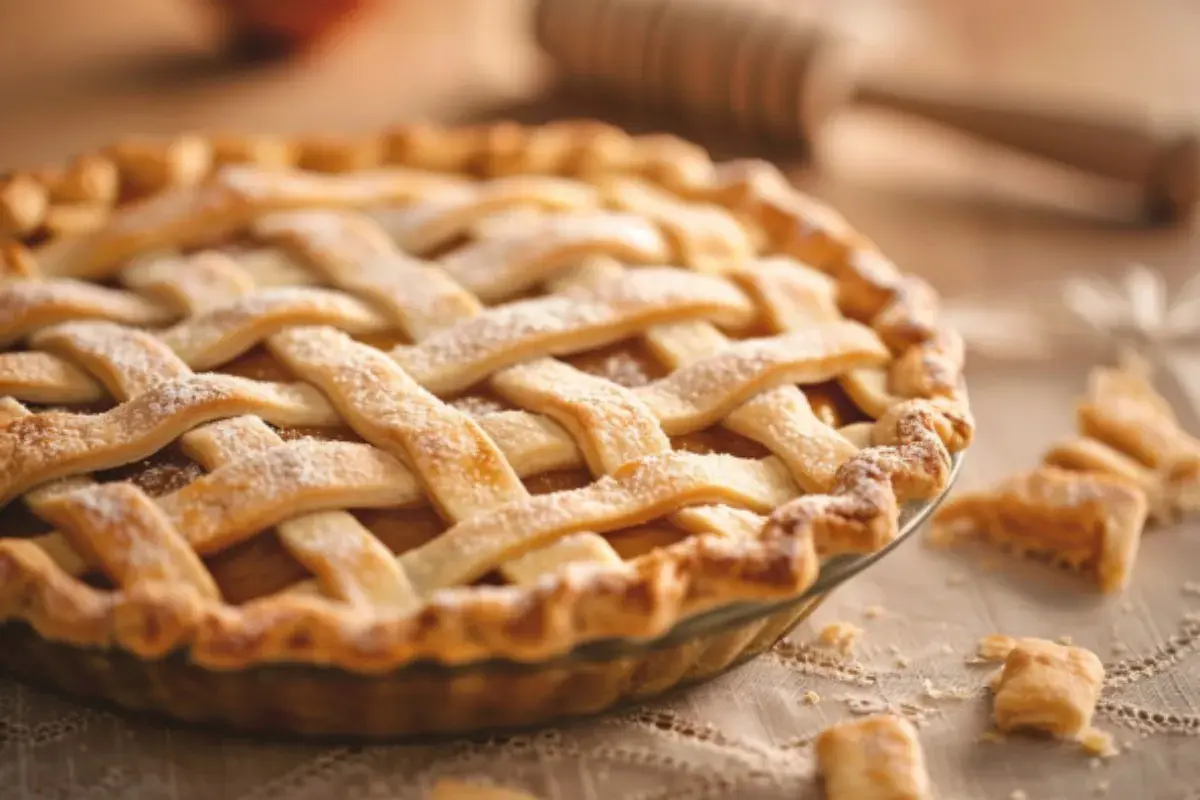Understanding the differences between pie crust and puff pastry is essential for any baker. Both play significant roles in the world of baking, contributing to countless dishes, both savory and sweet. Despite their similarities both containing butter, flour, and water the techniques and results vary greatly.
In this comprehensive guide, we’ll dive deep into the differences between pie crust and puff pastry, exploring their history, uses, techniques, and how to master each. Whether you’re preparing a decadent dessert or a savory pie, knowing when to use each will elevate your culinary creations. If you’re looking to master the method, check out this guide on how to make puff pastry from scratch.
History of Pie Crust and Puff Pastry
Before diving into the specifics, it’s helpful to understand the history behind both pie crust and puff pastry. Knowing their origins provides insight into why they evolved into two distinct pastries and how they’ve been traditionally used.
The Origins of Pie Crust

The history of the pie crust dates back to ancient Egypt, where early forms of pastry were made from flour and water and were used to enclose meat fillings. These ancient pie crusts were more practical than delicious they were designed to preserve the food inside for long periods rather than be eaten themselves. The crust acted as a protective shell, keeping the filling from spoiling.
As time passed, the art of making pie crust evolved in Europe, particularly in England and France. By the medieval period, the pie had taken on a more recognizable form, with crusts that were meant to be eaten. The crust’s flakiness became a sought-after quality, especially with the introduction of butter and lard into the dough. These ingredients provided the fat needed to create the classic flaky texture that we associate with pies today.
Even today, pie crust remains a staple in both sweet and savory dishes. Its sturdy, flaky texture makes it ideal for holding hearty fillings, from fruit pies to meat-based dishes like quiches and pot pies. In modern times, recipes for pie crust have become refined, offering bakers the ability to create perfectly tender, buttery bases that melt in your mouth.
The Origins of Puff Pastry
Puff pastry, on the other hand, has a more intricate history. It is believed that puff pastry originated in France during the Renaissance, though some claim its origins trace back even further to ancient Rome. What makes puff pastry unique is the process of layering butter into the dough, a technique known as “lamination.”
French chef Claude Lorrain is often credited with refining the puff pastry technique. Legend has it that Lorrain accidentally created puff pastry while attempting to make a different kind of dough. After realizing that the butter created delicate, flaky layers when folded and baked, the recipe was quickly perfected and spread throughout Europe.
Over the centuries, puff pastry has been used to create iconic pastries such as croissants, vol-au-vents, and mille-feuille. Its delicate structure, created by the thin layers of butter and dough, puffs up during baking, providing a light, airy, and flaky texture that is unparalleled in the world of baking.
What is Pie Crust?
Pie crust is a fundamental component of many baked dishes, acting as both a container for the filling and a delicious element in its own right. The typical ingredients for a pie crust are flour, fat (usually butter or shortening), and water. This simple combination can be transformed into a flaky, tender, or even crumbly base for a wide variety of recipes.
Characteristics of Pie Crust
- Flaky Texture: The signature flaky texture of pie crust is achieved by cutting cold butter or shortening into the flour before adding water. This creates small pockets of fat that melt during baking, leaving behind layers of flakiness.
- Stability: Pie crusts are designed to hold their shape when filled with dense, moist ingredients. The dough is rolled out once, shaped to fit a pie dish, and provides a sturdy, reliable base for fruit, custard, or savory fillings.
- Versatility: Pie crust is versatile enough to be used for both sweet and savory dishes. Whether you’re making a classic apple pie or a savory chicken pot pie, the crust acts as a flavorful complement to the filling.
- Variety of Types: The type of fat used can greatly affect the texture and flavor of pie crust. Butter yields a rich, flaky crust, while shortening produces a tender, crumbly one. Some recipes even combine butter and shortening for a balance of flakiness and tenderness.
How Pie Crust is Made

The process of making pie crust is relatively simple, but it requires attention to detail. The key to a perfect pie crust lies in keeping the butter or shortening cold and working quickly to prevent the fat from melting into the flour before baking.
- Step 1: Combine Ingredients: Start by combining flour and salt in a large bowl. Cut cold butter or shortening into the flour mixture using a pastry cutter or your fingers, creating pea-sized chunks of fat throughout the dough.
- Step 2: Add Water: Gradually add ice-cold water to the flour mixture, stirring with a fork until the dough begins to come together. Be careful not to overwork the dough—this will result in a tough crust.
- Step 3: Chill the Dough: Once the dough has formed, shape it into a disk, wrap it in plastic, and chill it in the refrigerator for at least 30 minutes. This helps relax the gluten and keeps the butter cold, ensuring a flaky crust.
- Step 4: Roll and Bake: After chilling, roll out the dough on a lightly floured surface to fit your pie dish. Carefully transfer the rolled dough to the pie plate, trim the edges, and either fill and bake or pre-bake the crust depending on your recipe.
What is Puff Pastry?
Puff pastry is a laminated dough known for its light, airy texture and multiple flaky layers. This delicate pastry is made by repeatedly folding butter into the dough, creating thin layers that puff up when baked.
Characteristics of Puff Pastry
- Light and Airy: Puff pastry’s defining feature is its light, flaky texture. As the butter melts and the water in the dough evaporates, the steam causes the dough to puff up, creating a pastry that is crispy on the outside and soft on the inside.
- Multiple Layers: Puff pastry typically contains hundreds of layers, all created through a process of folding and rolling the dough with butter. This lamination process results in the pastry’s signature “puff.”
- Delicate Structure: Unlike pie crust, which is stable and sturdy, puff pastry is delicate and fragile. It’s often used in dishes where the pastry is meant to be the star, such as tarts, pastries, and appetizers.
- Time-Consuming Process: Making puff pastry from scratch is a labor of love. The dough must be folded and rolled out multiple times, with each fold followed by a chilling period. However, the effort is well worth it for the flaky, buttery layers that puff pastry provides.
How Puff Pastry is Made
Making puff pastry from scratch can be intimidating, but with practice and patience, it becomes easier. The process requires precision to achieve the perfect layers of butter and dough.
- Step 1: Prepare the Dough: Start by combining flour, salt, and water to form a simple dough. Knead the dough lightly and allow it to rest for about 30 minutes. This initial dough will be the base for the lamination process.
- Step 2: Add Butter: Roll out the dough into a large rectangle. Place a block of cold butter in the center and fold the dough over it, completely encasing the butter.
- Step 3: Roll and Fold: Roll the dough out into a larger rectangle, then fold it into thirds like a letter. This process is called a “turn.” Rotate the dough 90 degrees, roll it out again, and fold it into thirds. Repeat this process four to six times, chilling the dough between each turn.
- Step 4: Chill and Bake: After the final turn, chill the dough for at least an hour before rolling it out for your recipe. When baked at a high temperature, the butter creates steam, causing the dough to puff up and form light, flaky layers.
Key Differences Between Pie Crust and Puff Pastry
Now that we’ve explored the basics of pie crust and puff pastry, let’s delve into the differences that set these two pastries apart.
1. Ingredients
- Pie Crust: Typically made with flour, fat (butter or shortening), and water. Some recipes may include a small amount of sugar or vinegar, but the ingredient list remains relatively simple.
- Puff Pastry: Also made with flour, butter, salt, and water, but the process of layering the butter into the dough sets puff pastry apart from pie crust. The butter is not mixed into the dough but rather layered, creating a dough with hundreds of thin layers.
2. Technique
The techniques for making pie crust and puff pastry are dramatically different.
- Pie Crust: The fat is cut into the flour until it resembles coarse crumbs. Water is then added, and the dough is rolled out once before baking. It is important to avoid overworking the dough to prevent it from becoming tough.
- Puff Pastry: In contrast, puff pastry involves rolling out the dough, adding butter, and folding the dough multiple times. Each fold adds layers of dough and butter, resulting in the flaky texture that puff pastry is known for.
3. Texture
- Pie Crust: The texture of pie crust is typically more stable and firm, making it ideal for holding heavy fillings. Depending on the recipe, it can be flaky, crumbly, or tender, but it will not puff up during baking.
- Puff Pastry: Puff pastry is light, airy, and incredibly flaky. Its delicate structure makes it perfect for dishes where the pastry itself is meant to be a focal point. As the name suggests, puff pastry puffs up in the oven, creating dramatic layers.
4. Uses
- Pie Crust: Best suited for dishes where the filling is the star. It provides a stable base for everything from fruit pies to savory quiches. The versatility of pie crust allows it to be used in both sweet and savory recipes.
- Puff Pastry: Used in dishes where the pastry is meant to be the star of the show. Puff pastry is perfect for creating light, crispy tarts, pastries, and appetizers. It’s also used in dishes like vol-au-vents, where the puffed layers of pastry create a beautiful presentation.
5. Time and Effort
- Pie Crust: Generally easier and quicker to make. The ingredients are mixed together, chilled briefly, and rolled out once. Even novice bakers can master a basic pie crust with a little practice.
- Puff Pastry: Requires more time and effort due to the lamination process. Making puff pastry from scratch involves multiple steps of rolling, folding, and chilling the dough. While the result is worth the effort, it’s a time-consuming process that requires patience.
When to Use Pie Crust vs Puff Pastry

Choosing between pie crust and puff pastry depends on the dish you’re making. Each pastry excels in certain applications, so it’s important to understand when to use each.
When to Use Pie Crust
- Hearty Fillings: Pie crust is ideal for holding heavy, dense fillings like fruit, custard, or meat. The sturdy structure of pie crust ensures that the filling stays contained without leaking or collapsing.
- Savory Pies: For dishes like quiche, pot pies, or tarts, pie crust provides a solid base that complements the savory ingredients. Its stable, flaky texture pairs perfectly with rich, savory fillings.
- Sweet Pies: Pie crust is also the go-to choice for sweet pies, such as apple, pumpkin, and pecan pies. The slightly crisp, buttery texture of the crust provides the perfect contrast to the soft, sweet filling.
- Rustic Dishes: If you’re making a rustic galette or hand pie, pie crust is the way to go. Its simplicity and ease of handling make it ideal for freeform shapes and casual presentations.
When to Use Puff Pastry
- Light and Flaky Desserts: Puff pastry is perfect for desserts where the pastry itself is a key feature. Croissants, turnovers, and tarts all rely on puff pastry’s flaky, airy texture to create a light and elegant dessert.
- Appetizers and Snacks: Puff pastry is often used to make savory appetizers like cheese straws, sausage rolls, or vol-au-vents. The dramatic puff of the pastry makes these dishes visually impressive and adds a light, crispy texture to complement the savory fillings.
- Show-Stopping Dishes: Puff pastry is ideal for dishes where presentation is important. Its light, delicate layers create a beautiful visual effect when baked, making it perfect for fancy dinners or special occasions.
Frequently Asked Questions
1. Can I substitute puff pastry for pie crust in recipes?
Yes, you can substitute puff pastry for pie crust in some recipes, but keep in mind that the texture and behavior of the dough are very different. Puff pastry will create a lighter, flakier result, while pie crust is more stable and holds up better to heavier fillings.
2. Why does my puff pastry not rise properly?
If your puff pastry isn’t rising properly, it may be because the dough or butter wasn’t cold enough when you baked it. Puff pastry relies on the steam created from the cold butter to form its flaky layers. Ensure you chill the dough sufficiently between turns and before baking.
3. What is the best type of fat to use in pie crust?
Butter is the most popular fat used in pie crust because of its flavor and ability to create flaky layers. However, shortening and lard can also be used for a more tender and crumbly texture. Some recipes use a combination of butter and shortening for a balance of flavor and texture.
4. How long can I store homemade pie crust and puff pastry?
Homemade pie crust can be stored in the refrigerator for up to 3 days or frozen for up to 3 months. Puff pastry can also be refrigerated for a few days but should be used within a week for best results. You can freeze puff pastry for up to 3 months, ensuring it’s tightly wrapped.
5. Is it difficult to make puff pastry from scratch?
Making puff pastry from scratch is a bit time-consuming but not overly difficult. It requires patience and precision in rolling, folding, and chilling the dough. For beginners, it may take a few tries to perfect the technique, but the results are worth the effort!
Conclusion
The difference between pie crust and puff pastry is more than just their ingredients—they represent two different approaches to baking, each with its unique characteristics and uses. While pie crust is sturdy, flaky, and easy to make, puff pastry is light, airy, and requires a bit more effort to achieve its signature layers.
Understanding these differences allows you to make the right choice for your recipes. Whether you’re baking a hearty pie or a delicate pastry, choosing the correct dough can make all the difference in your final dish.

